A few years back, the Irish dancing community was dealt a series of devastating losses. Four celebrated dance masters – Jimmy Erwin, Jerry Mulvihill, Michael Bergin, and Peter Smith – passed away in close succession.“All I could think,” recalls Riverdance choreographer and dancer Jean Butler, “was the steps and stories that died with them. The dances live in the body and memory of the people who have danced them.”
For Butler – who has spent her post-Riverdance career exploring more intimate forms and expressions of Irish dance, as well as teaching in Ireland and at New York University – something had to be done to chronicle the extensive history of Irish dance, to tell a part of the Irish diaspora story that had yet to be told.“I just got this fire in me: this has to happen now,” Butler recalls. She has created the Our Steps Foundation, whose mission is to reclaim “the essence of Ireland’s traditional dance, the story of its people, and the evolution of the form through a range of innovative archival, performance, and multi-disciplinary projects.”
In May, Butler and an Our Steps crew will embark on their first research trip to Dublin, as well as Belfast, London, and Scotland. They will be talking to as many people and performers as they can about Irish dance, documenting the personal part they’ve played in this history, as well as – whenever possible – recording their performances, and tracing their distinct influences.
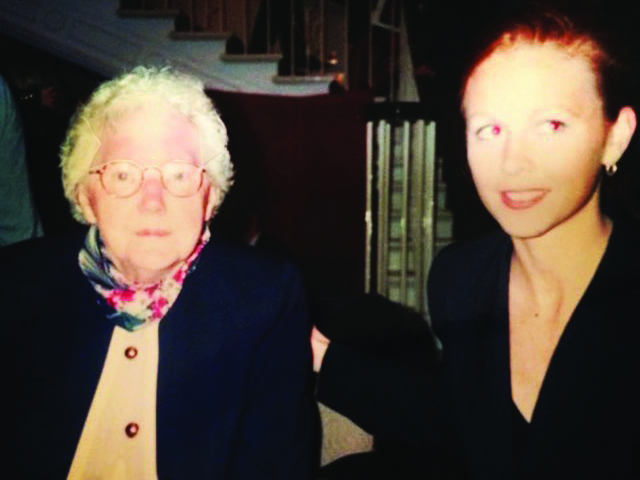
Ballyhaunis, County Mayo. at the National Concert Hall for the Mayo 5,000 concert in 1993.
“I dance the way I do because of Donny [Golden, Butler’s celebrated teacher]. Donny dances the way he does because of Jimmy Erwin. And Jimmy Erwin danced the way he did because of Cyril McNiff.” But without a central source to record such legacies, they are in danger of simply vanishing from historical record. “Irish dancers don’t talk about this stuff. They just do it,” adds Butler, who was born and raised on Long Island by a mother from Mayo and a father who was New York City Fire Department battalion chief. To create this first archive dedicated solely to Irish dance, Butler has partnered with the Jerome Robbins Dance Division of the New York Public Library. “Jean Butler is one of the most accomplished Irish dance artists of the last century and a pioneer in the field, expanding and re-imagining the vocabulary and boundaries of Irish step dance,” said Linda Murray, curator of the Jerome Robbins Dance Division.
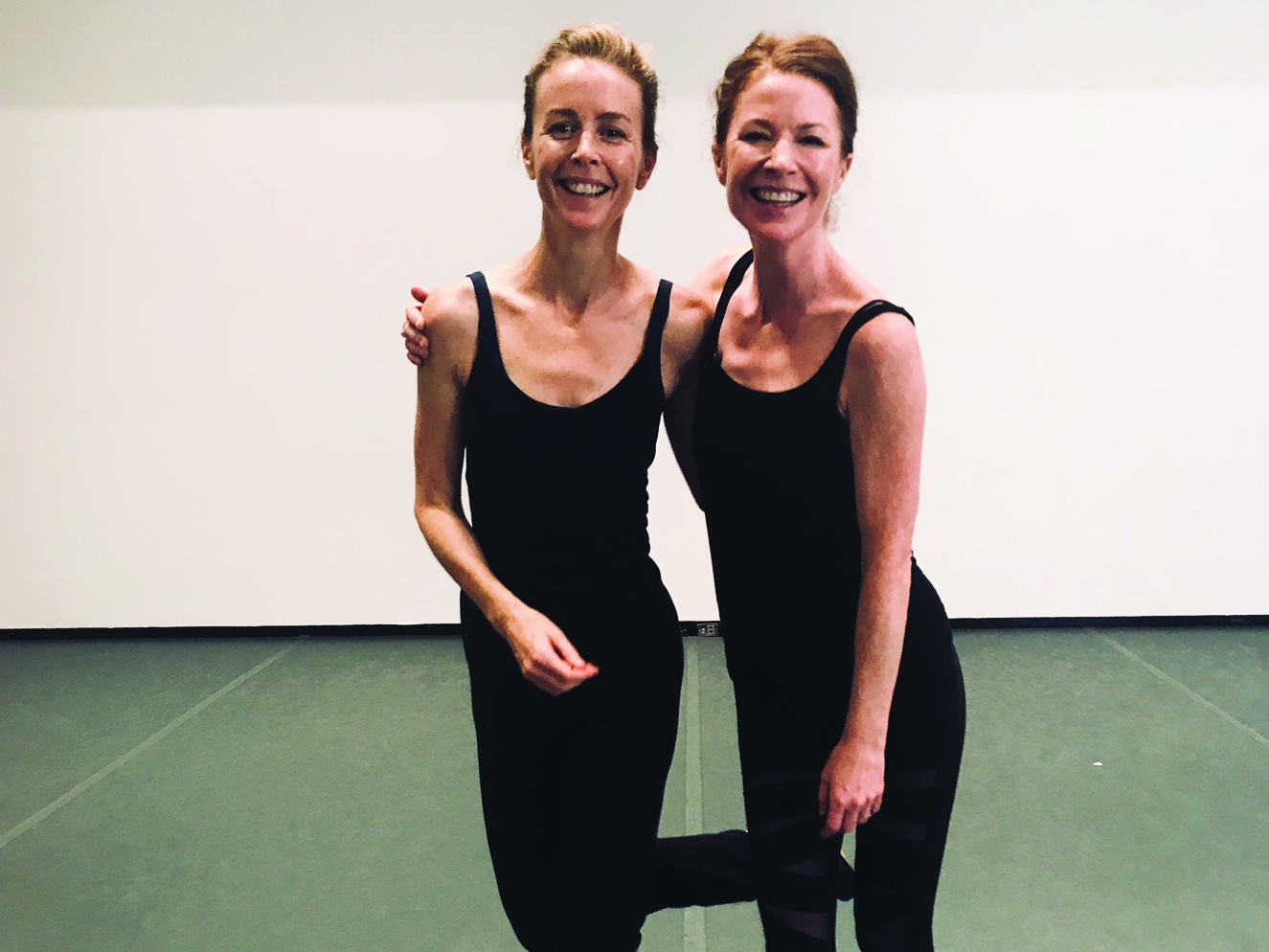
“Her desire to safeguard the legacy of Irish dance is one that the Jerome Robbins Dance Division shares, and we were honored to serve as partners on this project.” Our Steps will be a “living archive” for scholars, dancers, and other artistic storytellers, who too often fail to grasp or even acknowledge the depth, complexity, and richness of Irish dance and how it relates to, and reflects, the history of Ireland and the Irish diaspora. Also in the works is an installation entitled The Stepping Fields, which will use material collected by Butler as part of the Our Steps project, but also include artistic works about dance, by artists working outside of the field, such as writer Enda Walsh. For Butler, competitions and commercialism have become so dominant in the world of Irish dance that they are crowding out other important discussions – on big topics, such as history and power, as well as more personal matters. “My connection with my teacher (Golden) was so strong, and I want Irish dancers today to know how important that connection can be,” says Butler, whose decades of contributions to the world of Irish dance have made her a new member of the Irish America Hall of Fame.
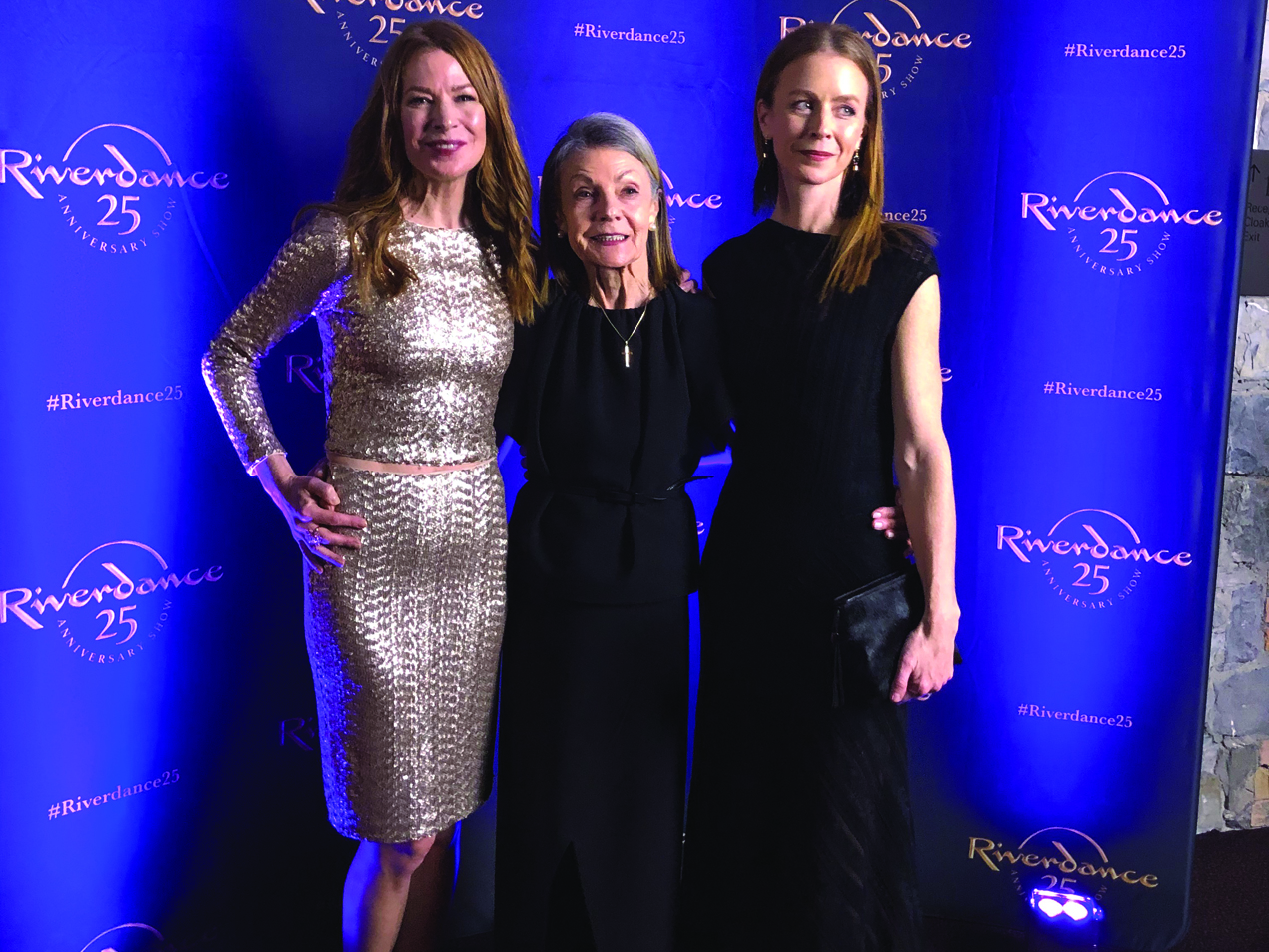
It’s been more than two decades now since Jean Butler was, as she referred to herself, “just a gigging Irish dancer.” She was touring with the Chieftains, as well as traveling to Dublin to perform on weekends at the Harcourt Hotel. But then came Riverdance, celebrating its 25th anniversary this year. Butler originated the principal female roles and co-choreographed the wildly popular show. She was first exposed to Irish dance by her mother, Josephine, who was born in Mayo, and came to the U.S. at 17. “I come from a long line of very strong women,” declares Butler, when asked what drove her to pursue dance with such passion. “I don’t think I could have articulated this (when I was younger). But it had to come from them. My mom’s story is such a big part of this story.” Butler attended Birmingham University in the U.K., where she studied drama. “I always had theatrical aspirations. I knew I would be a performer, but I never expected it to be through dance. And then, obviously, Riverdance happened.” That was in 1993, when she was still in Birmingham and received an invitation from producers Moya Doherty and John McColgan. The rest, of course, is history. Riverdance became a global phenomenon – though Butler moved on from it in 1997.
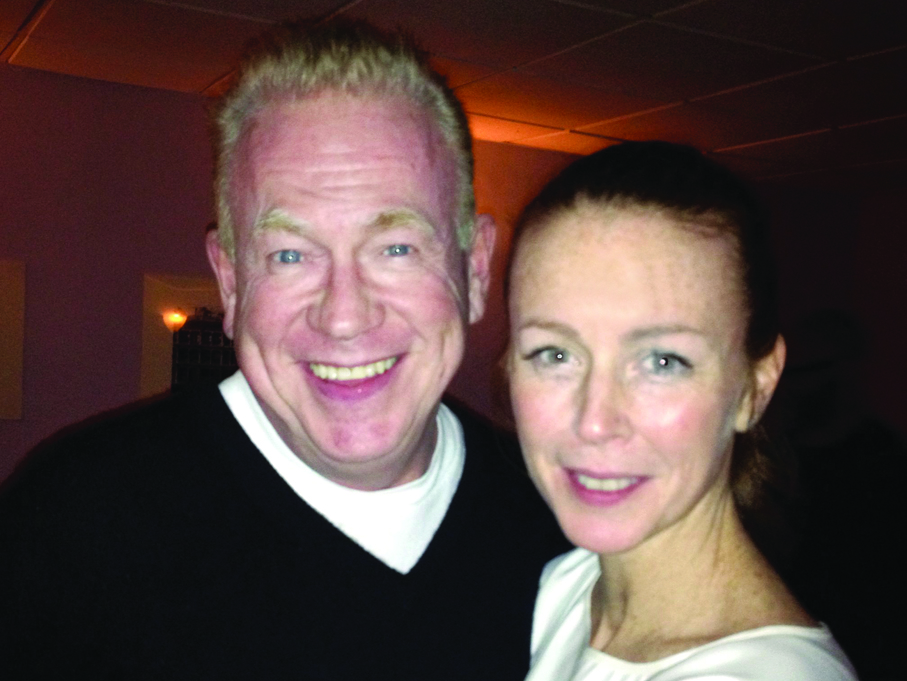
Danspace Project, NYC after Jean’s performance of “Day” commissioned by the Abbey Theatre.
“Who wants to stay in the same place?” she says. “We accept that art is about growing and evolving.” Butler developed a follow-up performance show entitled Dancing on Dangerous Ground, which The New York Times celebrated for “channeling Irish step dancing into genuine artistic expression.”But she also decided to go back to school, studying contemporary dance at the University of Limerick. The dancing projects that followed were far more intimate and nuanced. Butler also collaborated with artists outside of dance – poets, filmmakers, visual artists and actors.
“My contemporary work is pared back, abstract, and innovative, as I am asking hard questions about what it means to be an Irish dancer. I am challenging my audiences to not sit back but to lean in and engage in a way that they are not used to. It is the direct opposite of my work in Riverdance and Dancing on Dangerous Ground and that’s exactly as it should be.” In 2001, Butler married fellow artist Cuan Hanly, a fashion designer. Their wedding was held in Mayo near the home of her grandmother Mae Byrne, where her mother was also born. In 2006, Butler and her husband moved to Brooklyn.

Butler Choreographs Connemara,” hosted by Notre Dame’s Global Center for Irish Studies at Kylemore Abbey
Teaching and researching at NYU’s Glucksman Ireland House compelled Butler to reflect not just on dance, but on its place in the broader culture. Textbooks and other scholarly sources, Butler came to discover, often have no references at all to Irish dance.“I refused to accept that,” she says. “Dance is always the last thing on the list. Dance needs to be a part of the bigger conversation in the humanities.” She believes this in part because dance allows people to see other topics – politics, history, gender roles, immigration – with new eyes. “We need to think about dance in relation to the state, to the rise and fall of the Church (in Ireland),” says Butler.
Current intense debates about gender, prompted in part by the #MeToo movement, are also reflected in dance. “Males and females are treated so differently in the world of dance,” says Butler, who notes that generations of female as well as male Irish dancers have been forced to negotiate a complex web of expectations and associations related to gender. Many, on the other hand, simply chose not to participate in Irish dance – or to conceal their participation – precisely because of powerful gender associations linked to dance. (According to Butler, male participation in Irish dance skyrocketed when they were no longer required to wear a kilt.)
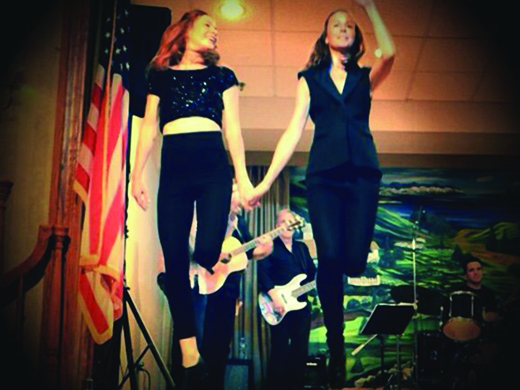
Mineola Irish-American Center, where Donny Golden taught them to dance and where he still teaches to this day.
Female Irish dancers, meanwhile, have long been objectified on stage and screen in disturbing and unsettling ways by male show creators. All of which can obscure what is powerful and beautiful about Irish dance, how it expresses the tragedies and triumphs of a relatively small island culture that, against tremendous odds, has managed to conquer the world.
It is Jean Butler’s hope that the forthcoming The Stepping Fields installation and the broader work of the Our Steps Foundation inspires audiences to think about all of this – to appreciate Irish dance in all of its glory and complexity. Because, to a substantial degree, the story of Irish dance is the story of the Irish people.“This is about the diaspora,” declares Butler. “Everywhere the Irish are, they bring dance with them.”
To donate to Our Steps Foundation visit: https://www.ourstepsfoundation.org/

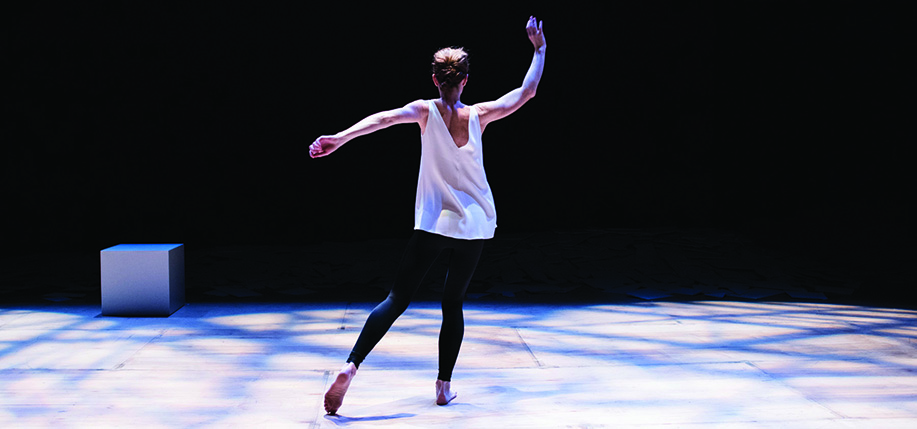
My daughter danced at the same time as Jean at the competitions around New York and New Jersey.. I used to say ‘when will this beautiful dance be recognized for the what it is ‘ and how it keeps the heritage alive.’ Jean deserves all the tributes accorded her and of course Michael Flatley for both showing a culture to long ignored.
I would like Jean to coordinate with a classic ballet choreographers to create a ballet that would include step dancing and choeli dancing in a story line using traditional irish music.
I trace my dancing days all the way back, very far away to a time that step dancing started to become much more popular and families would travel from or to Chicago and beyond to compete. I remember dancing in New York, meeting Cyril McNiff and being very impressed with the high level of dance that he taught. Though fairly successful in the Midwest, alas, I didn’t do so well competing in NewYork but it was a vacation and experience I will never forget. Cyril later judged me at a feis in Cleveland and awarded me a girl’s junior championship, one of my last competitions.
All this to say that soon after I stopped dancing and at a time when the costumes were designed by teachers of various levels of sophistication, some quite beautiful, made with silk and beautifully embroidered, by a few years later, the costumes had become something out of the fantasies of little girls who like glitter, indiscriminately. And that is all that is seen today, with fake crowns, fake hair, fake skin. WHERE does this come from? To me it completely fails to show and hides the natural beauty of dancers of all ages, is not found in anything Irish, and distracts from the real skill and talent shown by most dancers today. And boy dancers are not regaled out in such unattractive and gaudy costumes either.
Please note, Riverdance and its other iterations never costumed dancers like dancers appear in their ‘unique’ costumes in shows and feisianna. I think Michael Flatley designed the costumes for Riverdance and I wouldn’t be surprised that Jean Butler had a hand in designing them also. They are costumes that reflect the simplicity and natural beauty of Irish Dance and should become the style once again.